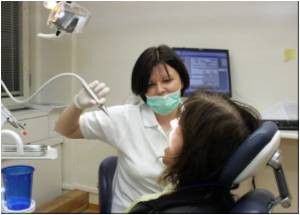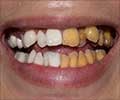In a recent study it was found that people with jaw pain disorders were more sensitive to mildly painful sensations elsewhere in the body.

"There is a real difference. People with TMJ are more sensitive than those without TMJ on parts of the body other than the jaw," says co-author Joel Greenspan, PhD, professor and chair of the School''s Department of Neural and Pain Sciences. "To us it means the nervous system for interpreting pain information is now altered. We think that general heightened pain sensitivity is part of the chronic pain problem."
The University of Maryland dental school is one of four testing sites in the study led by William Maixner, DDS, PhD, director of the Center for Neurosensory Disorders at the University of North Carolina School of Dentistry in Chapel Hill. The study is called the Orofacial Pain Prospective Evaluation and Risk Assessment, or OPPERA, in which researchers tracked followed 3,200 healthy volunteers aged 18 to 44 for three to five years to see how many develop the disorder. The other two sites are the University of Florida at Gainesville and the University at Buffalo.
Temporomandibular joint disorders produce pain that radiates from the jaw and surrounding muscles, restricting jaw movement and causing considerable suffering. Although the disorders vary in duration and severity, for some people the pain becomes an unrelenting and long-term feature of their lives.
Genetic factors may also play a role in chronic TMJD. The researchers identified several genes, including some known to influence stress response, psychological well-being, and inflammation that may point to targets for discovery of new drugs to treat TMJD and related chronic pain conditions.
And, the researchers report that the findings provide evidence that chronic TMJD is at least partially linked to a person''s perception of and ability to suppress pain, which is determined by the body''s physiological regulatory systems.
Advertisement
Adds Maixner: "Previous studies haven''t been able to be as conclusive as OPPERA because they''ve often included fewer participants and didn''t follow participants for an extended amount of time. OPPERA is allowing us to study potential biological, psychological, and genetic risk factors over a longer period of time, so we will be able to better evaluate the association of these factors with TMJD. This novel study will also allow us to learn more about pain disorders in general, and will improve our ability to diagnose and treat chronic pain conditions across the board."
"The model, like a compass to a traveler, predicts the route ahead in the development of specific persistent pain disorders," Maixner says. "In this case, we predicted that biological and psychological risk determinants, which are modified by both life history and genetic factors, contribute to the onset and persistence of TMJD."
The research team will publish additional findings and insights as they continue to analyze the study data.
The National Institute of Dental and Craniofacial Research-funded study was conducted across four study sites: UNC-Chapel Hill, led by Maixner, Luda Diatchenko, MD, PhD, Gary Slade, PhD, Eric Bair, PhD, MS, and Shad Smith, DDS; the University of Florida, led by Roger Fillingim, PhD, MA; the University of Maryland, led by Greenspan and Ronald Dubner, DDS, PhD; and the University at Buffalo, N.Y., headed by Richard Ohrbach, DDS, PhD. Charles Knott with Batelle Memorial Institute served as the director of the data coordination center.
Source-Newswise













